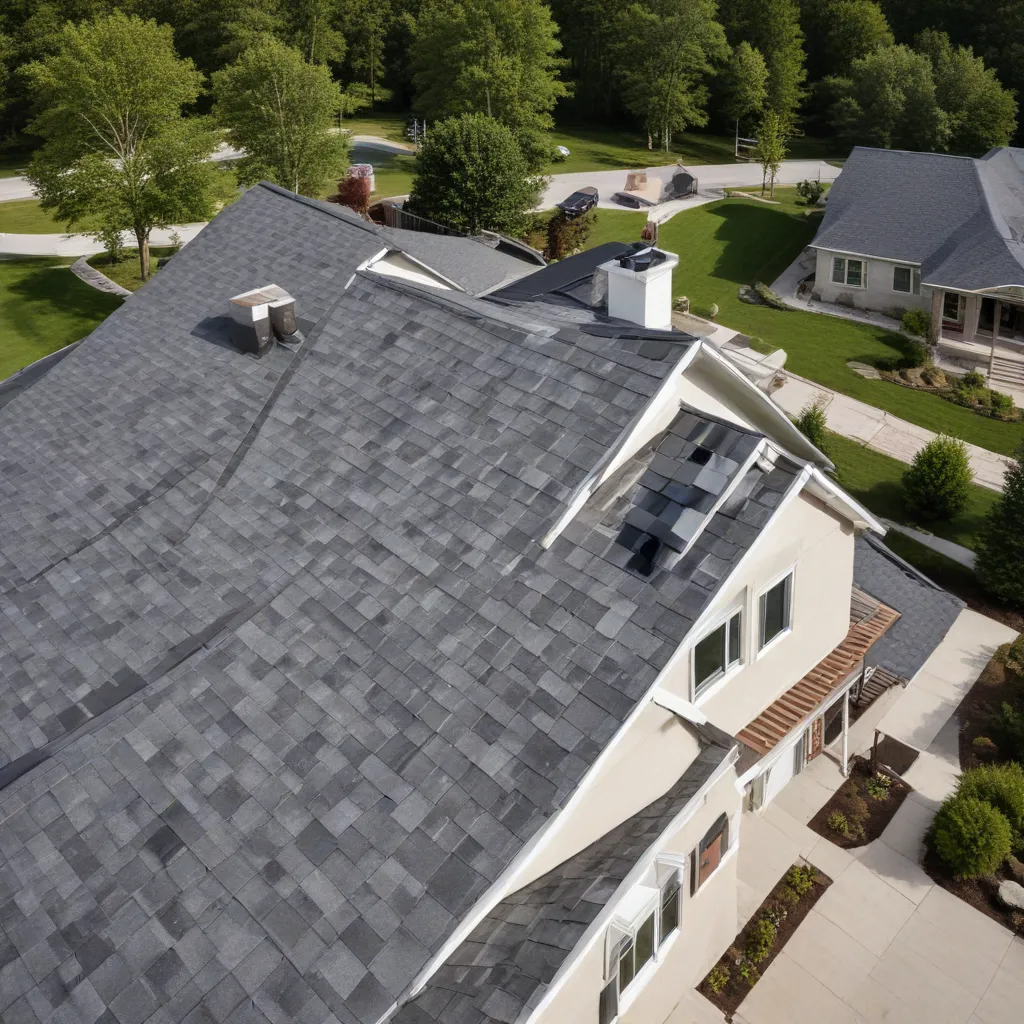
In today’s world, where energy costs continue to rise and environmental concerns loom large, homeowners and building owners are increasingly seeking ways to enhance the energy efficiency of their structures. One crucial component that plays a pivotal role in this endeavor is the roof. A thoughtfully designed and constructed roofing system can have a profound impact on a building’s overall energy consumption and long-term savings.
Roof Design Considerations
When it comes to energy-efficient roof design, several key factors must be taken into account, including thermal insulation, ventilation and air flow, and the selection of roofing materials.
Thermal Insulation
Proper insulation is essential for regulating a building’s temperature, preventing heat loss in the winter and minimizing heat gain in the summer. By ensuring adequate insulation in the roof, you can significantly reduce the energy demands for heating and cooling, leading to substantial cost savings over time. When adding insulation, it’s crucial to consider the structural integrity of the roof substrate, as the additional weight may require the application of metal b-decking to provide the necessary shear support and load-bearing capacity.
Ventilation and Air Flow
Proper ventilation is another critical component of an energy-efficient roof design. Adequate airflow in the attic or roof space helps release excess heat and moisture, preventing damage to the roof structure and improving indoor air quality. Strategically placed vents, such as ridge vents, soffit vents, and gable vents, can facilitate this natural air circulation, enhancing the overall efficiency of the roofing system.
Roofing Materials
The choice of roofing materials also plays a significant role in a building’s energy performance. Tile, composite, and metal roofs each offer unique advantages when it comes to energy efficiency. Tile and metal roofs, for instance, are known for their high thermal reflectivity, which can effectively block the sun’s heat from entering the building. Composite roofs, on the other hand, often provide excellent insulating properties, helping to maintain a comfortable indoor temperature year-round.
Energy-Efficient Strategies
Beyond the fundamentals of roof design, there are several advanced strategies that can be employed to further enhance a building’s energy efficiency, including passive solar design, active solar systems, and the use of reflective surfaces.
Passive Solar Design
Passive solar design harnesses the natural movement of the sun to provide heating and cooling. This can be achieved through strategic placement of windows, the use of thermal mass materials, and the incorporation of architectural features like overhangs to shade the building from direct sunlight during the warmer months.
Active Solar Systems
Active solar systems, such as photovoltaic panels or solar thermal collectors, can be integrated into the roofing system to generate renewable energy for the building. These systems not only reduce reliance on traditional power sources but also contribute to a lower carbon footprint and increased energy independence.
Reflective Surfaces
Incorporating highly reflective roof surfaces, such as cool roofs or green roofs, can significantly enhance a building’s energy efficiency. Cool roofs utilize specialized coatings or materials that reflect a large portion of the sun’s rays, preventing heat absorption and reducing the need for air conditioning. Green roofs, on the other hand, leverage the natural insulating properties of vegetation to regulate indoor temperatures.
Cost-Saving Measures
While investing in energy-efficient roofing solutions may require an upfront financial commitment, the long-term savings and benefits can be substantial. Homeowners and building owners should explore various incentives and rebates available, as well as the potential for long-term energy savings and the importance of maintenance and upgrades.
Incentives and Rebates
Many local, state, and federal governments offer incentives and rebates for the installation of energy-efficient roofing systems, such as tax credits or subsidies. These financial incentives can help offset the initial investment, making the transition to an energy-efficient roof more accessible.
Long-Term Energy Savings
Over the lifetime of an energy-efficient roofing system, the cumulative savings on heating and cooling costs can be significant, often outweighing the upfront expenditure. Additionally, the increased lifespan of certain roofing materials, such as metal, can further contribute to long-term cost savings by reducing the frequency of roof replacements.
Maintenance and Upgrades
Proper maintenance and timely upgrades to the roofing system are crucial for ensuring ongoing energy efficiency. Regular inspections, gutter cleaning, and prompt repairs can help maintain the optimal performance of the roof, while strategically timed upgrades, such as adding insulation or upgrading to a more reflective surface, can further enhance energy savings.
Environmental Impact
Beyond the financial benefits, energy-efficient roof design also plays a crucial role in reducing a building’s environmental impact, aligning with the principles of sustainability and minimizing the carbon footprint.
Sustainability Principles
By embracing energy-efficient roofing solutions, homeowners and building owners can contribute to the broader goals of sustainability. This includes minimizing the consumption of natural resources, reducing waste, and promoting the use of renewable energy sources.
Reduced Carbon Footprint
The energy savings achieved through an energy-efficient roof directly translate into a lower carbon footprint, as the building’s reliance on fossil fuel-based energy sources is reduced. This, in turn, contributes to a cleaner and more sustainable environment for the local community and the planet as a whole.
Waste Minimization
Many energy-efficient roofing materials, such as metal, are highly durable and can be recycled at the end of their lifespan, reducing the amount of waste sent to landfills. This aligns with the principles of a circular economy, where resources are reused and repurposed, rather than discarded.
By carefully considering roof design, leveraging energy-efficient strategies, and exploring cost-saving measures, homeowners and building owners can not only achieve substantial long-term savings but also contribute to a more sustainable future. As the demand for energy-efficient solutions continues to grow, the roofing industry is poised to play a pivotal role in driving this transformation. To learn more about how Genuine Roof Systems can help you maximize the energy efficiency of your roofing project, visit www.genuineroofsystems.com.

























